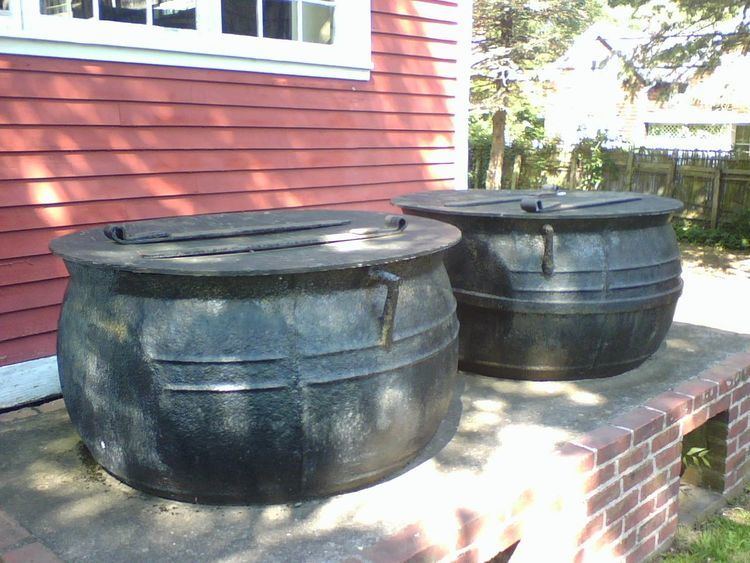 | ||
A trywork, located aft of the fore-mast, is the most distinguishing feature of a whaling ship.
In two cast-iron trypots set into this furnace of brick, iron and wood, whale oil was rendered from the blubber of whales, much as lard is rendered from frying fatty pork. The furnace is temporarily affixed to the deck by "iron knees", and a reservoir of water under the bricks keeps the heat from burning the wood of the deck.
In the 18th and 19th century New England whaling industry, the use of tryworks (two large try pots in a brick furnace) on whaling ships allowed them to stay at sea longer. Since they could boil out their oil, they did not have to carry unprocessed blubber home. The slices of blubber were kept as thin as possible for the process, and on New England whaling ships, these slices were known as "bible leaves" by the sailors. The ability to use tryworks at sea thus enabled the Yankee whaling industry to flourish.
